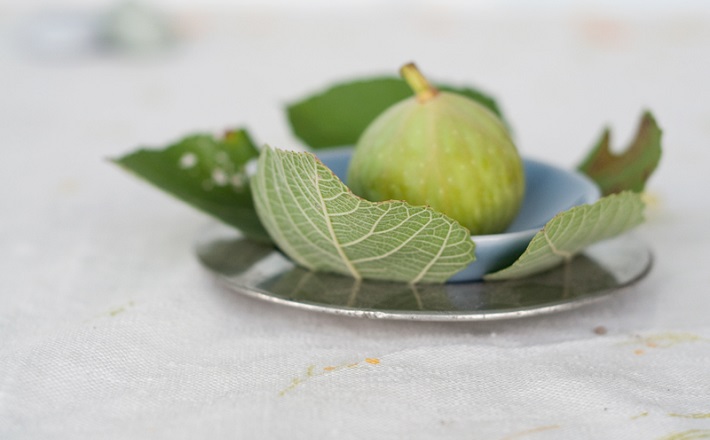Commentary on Song of Solomon 2:8-13
What does it mean to love a landscape?
The Song of Songs has often been pitched in one of two ways: either it is an allegory about God’s love, or it is erotic poetry about human love. (As it is the only really sex-positive text in the Bible, by all means preach on that!) But to cast the debate as an either/or undervalues the complexity of the poetry. Rarely do people acknowledge the many other kinds of love that the Song encompasses. These include the love of land.
Song of Songs, not Song of Solomon
A brief side-note on the title of the text: I will be referring to this text as the “Song of Songs” (“the Song,” for short), which is the Hebrew title. “Song of Solomon,” is taken from the superscription, “The Song of Songs, which is Solomon’s.” The latter suggests that the Song was associated with Solomon, or perhaps part of a larger collection of materials gathered under Solomon’s name. It does not mean Solomon wrote it.
Calling the text “The Song of Solomon” perpetuates the problem of rendering women in biblical texts invisible (even though this is what the New Revised Standard Version [NRSV] and many other English translations do). This is a very woman-centered text, and women’s voices predominate. The entire lectionary text is cast in the voice of the woman. When the male lover speaks, it is reported to us in the woman’s words: “My beloved speaks and says to me…” In this way, the woman’s voice is the center of the poem’s action and meaning. This point should not be underestimated. The current upsurge of the #MeToo movement reminds us again of the deep need to listen to women’s voices.
A “green” text
Perhaps more than any other biblical text, the Song is filled with images relating to the natural world. It is an incredibly “green” text. The Song is marked by plentiful vineyards (Song of Songs 1:6, 14; 2:15; 7:13; 8:11, 12), fields (1:7-8; 2:7; 3:5; 7:12), and gardens (4:12-5:1; 6:2, 11; 8:13, 14). Twenty-four plant varieties are specifically named in the Song, from the native date palm to wildflowers to exotic spices like myrrh (for example 7:9; 2:1; 4:14). To read the Song, then, is to be invited to experience a lush and fertile landscape. It is also an invitation to look at the land around us, to see the larger world in springtime, and to understand its specificity and detail.
This is most obvious in the description of Song of Songs 2:10-13, at the heart of the passage. The lover calls to the young woman to come away with him, to enjoy their love in the fields:
“Arise, my love, my fair one,
and come away;
for now the winter is past,
the rain is over and gone.
The flowers appear on the earth;
the time of singing has come,
and the voice of the turtledove
is heard in our land.
The fig tree puts forth its figs,
and the vines are in blossom;
they give forth fragrance….”
This is quite a detailed description of the natural world, including climatological factors, attention to season and agricultural practices, the observation of blossoms and fruiting trees, and of course the vineyard. Vines were a quintessential local crop in ancient Israel, central to its agrarian economy. Their blossoming hints at the sensuality of wine. They are also a potent symbol for the young woman’s sexuality.
But pause for a moment with the description of plant-life. There is an ethical call here. People are losing knowledge of landscapes. This is a well-known phenomenon, and it is happening faster in wealthier, western nations than anywhere else in the world.1 Children are no longer able to identify native animals and plants, a kind of knowledge that was once taken for granted. We do not know the world around us. Perhaps the most alarming consequence of this is also the most basic: if we do not know the natural world, we will neither enjoy it nor protect it. With this loss come other losses, including widespread species extinction. The ramifications of such losses are not yet known.
Seeing the lover/ seeing the land
This poem sees with a kind of double-vision. Its metaphorical imagination sees the lovers not only in terms of plants, but also in terms of animal life: “My beloved is like a gazelle or a young stag” (Song of Songs 2:8-9; compare with 8:14; 1:9, 15; 2:14). The Song consistently blurs boundaries, making us wonder where people end and the earth begins.
The young man is imagined as a gazelle, and so when he approaches it is not clear whether she hears him speaking, or the sound of his hooves rustling the brush outside her window. The Hebrew word qol can mean either “voice” or “sound.” Similarly, the young woman is described as a dove, so when the young man says that her voice is sweet (2:14) is it the speaking voice of a human he describes, or the coo of a dove? The poetry self-consciously blurs boundaries between the landscape and the lovers, a technique that is used throughout the Song.
In this way, the Song models an ethical stance: to see the lover as a landscape. And again: to see the landscape as a lover. How could our ethics of land be shaped by taking seriously this radical vision?
Notes:
- See, for example Beth S. Robinson, Richard Inger, and Kevin J. Gaston, “A Rose by Any Other Name: Plant Identification Knowledge and Socio-Demographics (PLoS One. 2016; 11(5): e0156572) and the studies cited there.


September 2, 2018